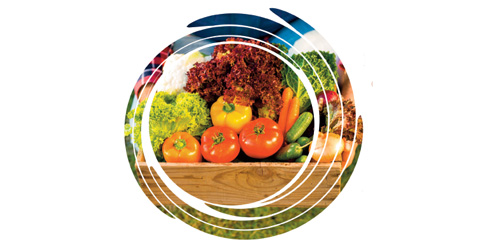Reducing irrigation
The D’Ottavio family’s blueberries, planted three years ago, were brought to fruition with an eye toward sustainability.
“We planted bee habitats and worked with Nature’s Eye [a wildlife management firm] to have a state-of-the-art irrigation system to save on fuel and water,” D’Ottavio says. “We’ve seen substantial savings over the past years and recently incorporated the watering system throughout our entire farm.”
Soil health
Eastern Fresh Growers, Inc. in Cedarville is also keeping a close eye on fields and steering clear of overuse. Thomas Sheppard, president of Eastern Fresh, explains: “We plant tillage radish in the field to combat soil compaction, and do all that we can to get organic matter back into the soil.”
Additionally, Sheppard notes, “We’ve had scouts in the fields for years, and are always learning new methods to cut down on chemical use and more specific treatments to eradicate certain insects.”
In an effort to limit tillage as much as possible, Eastern Fresh also uses GPS tracking to monitor fields and avoid compacting the same spots year after year.
Recycling
To do its part, the Vineland Produce Auction has recently “begun handling both dry and plastic boxes which can be recycled as well as biodegradable mulch,” according to DeFoor.
Challenges
Of course, the Garden State saw its share of obstacles too—from wild weather swings and labor shortfalls to increased international competition—but the state’s produce purveyors have proven that adaptability is key.
Erratic weather patterns
Weather has been a carnival ride for the entire country, with unseasonable temperature variability affecting crops from coast to coast.
Tim Wetherbee, in sales at Diamond Blueberry, Inc. in Hammonton, acknowledges “weather is the biggest contributing factor” for those in the produce industry. This year, the weather has certainly not followed what Wetherbee considers “normal patterns of the past.”
With periods of warm weather and then days in the 30s, those along the Eastern Seaboard could only watch and wait. “Over the past couple of years, we’ve been having more extreme weather compared to the past,” agrees Flaim, knowing growers can only do their “best to monitor it closely and make necessary changes to seeding/planting patterns and watering.”



